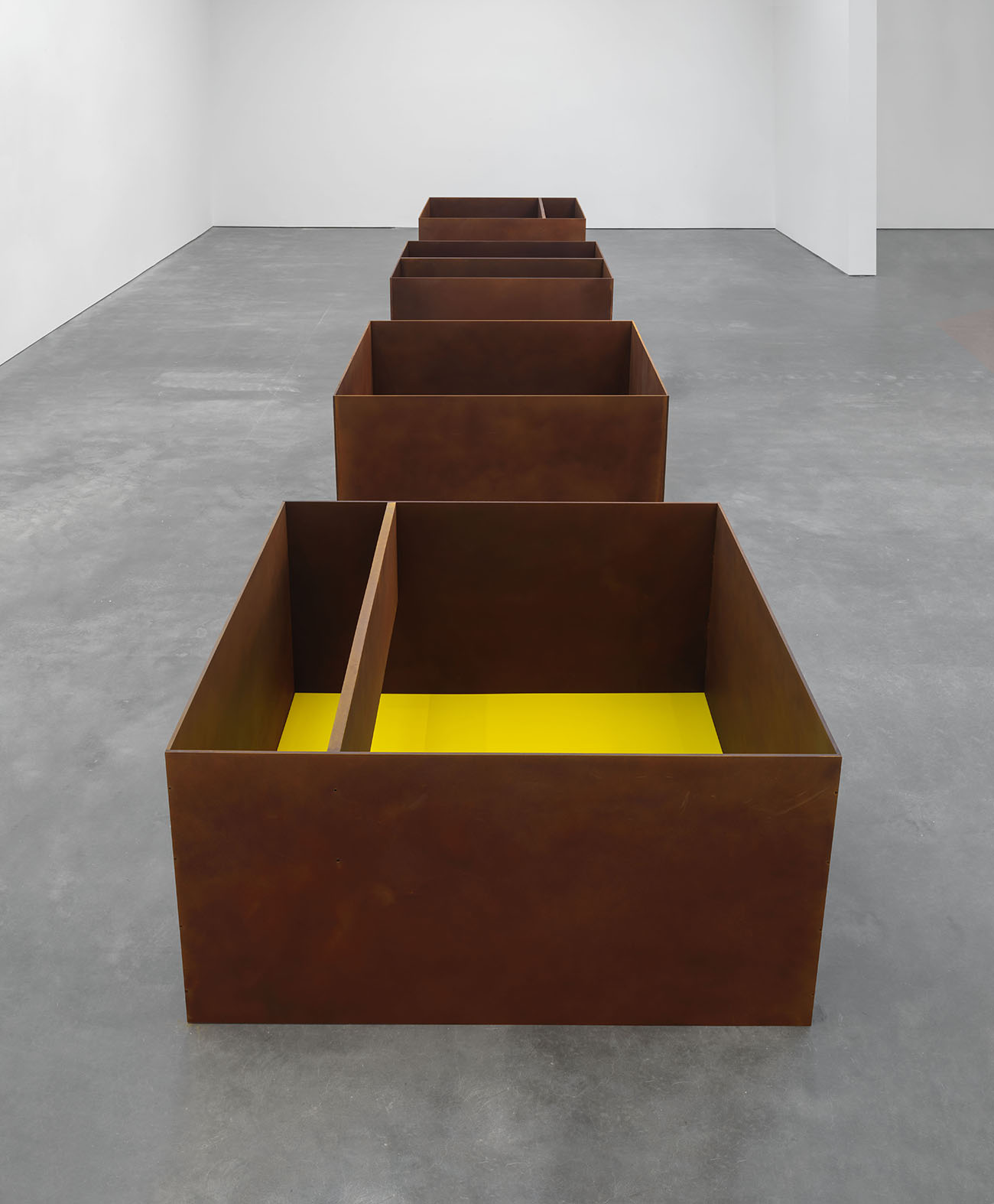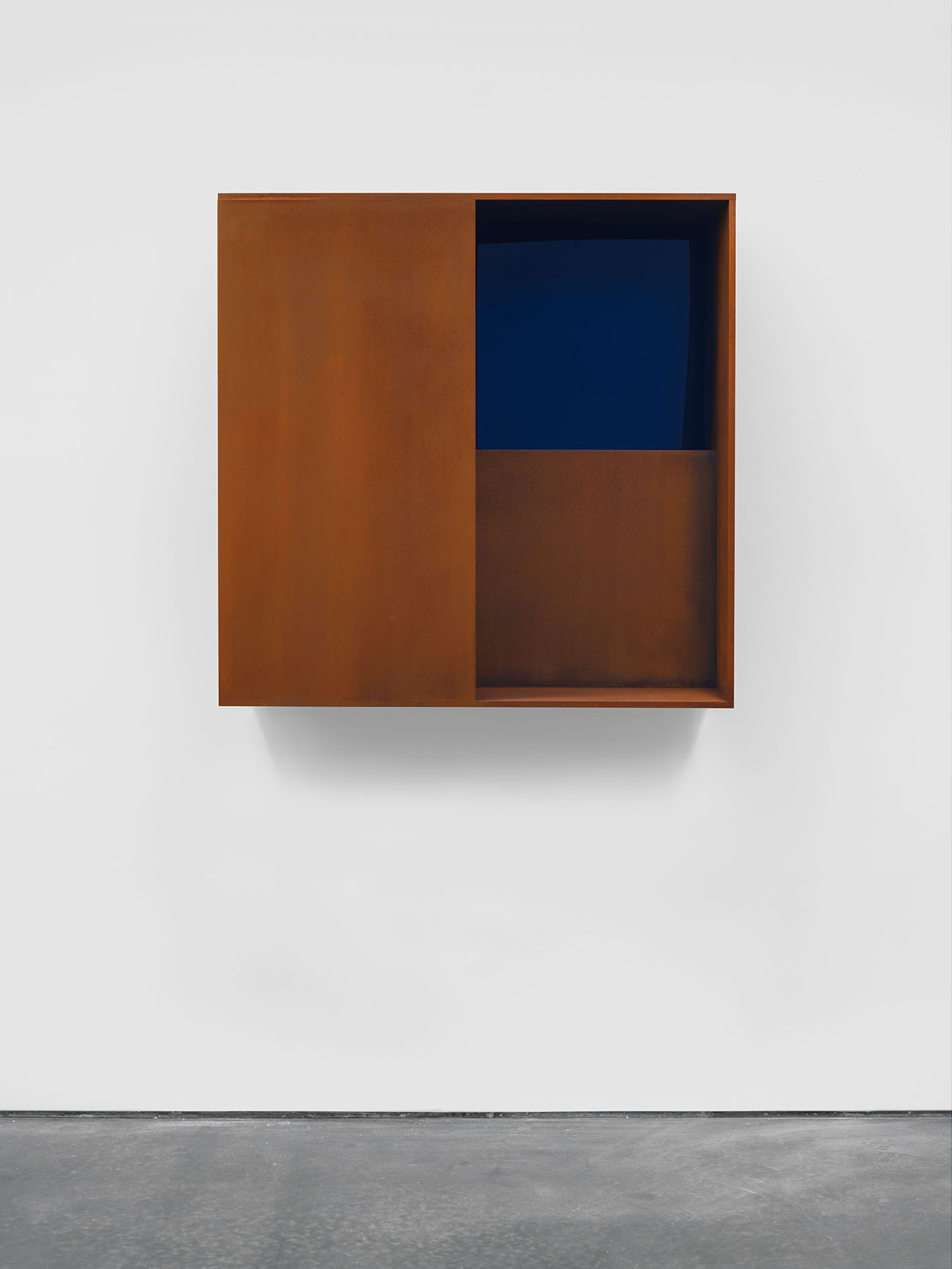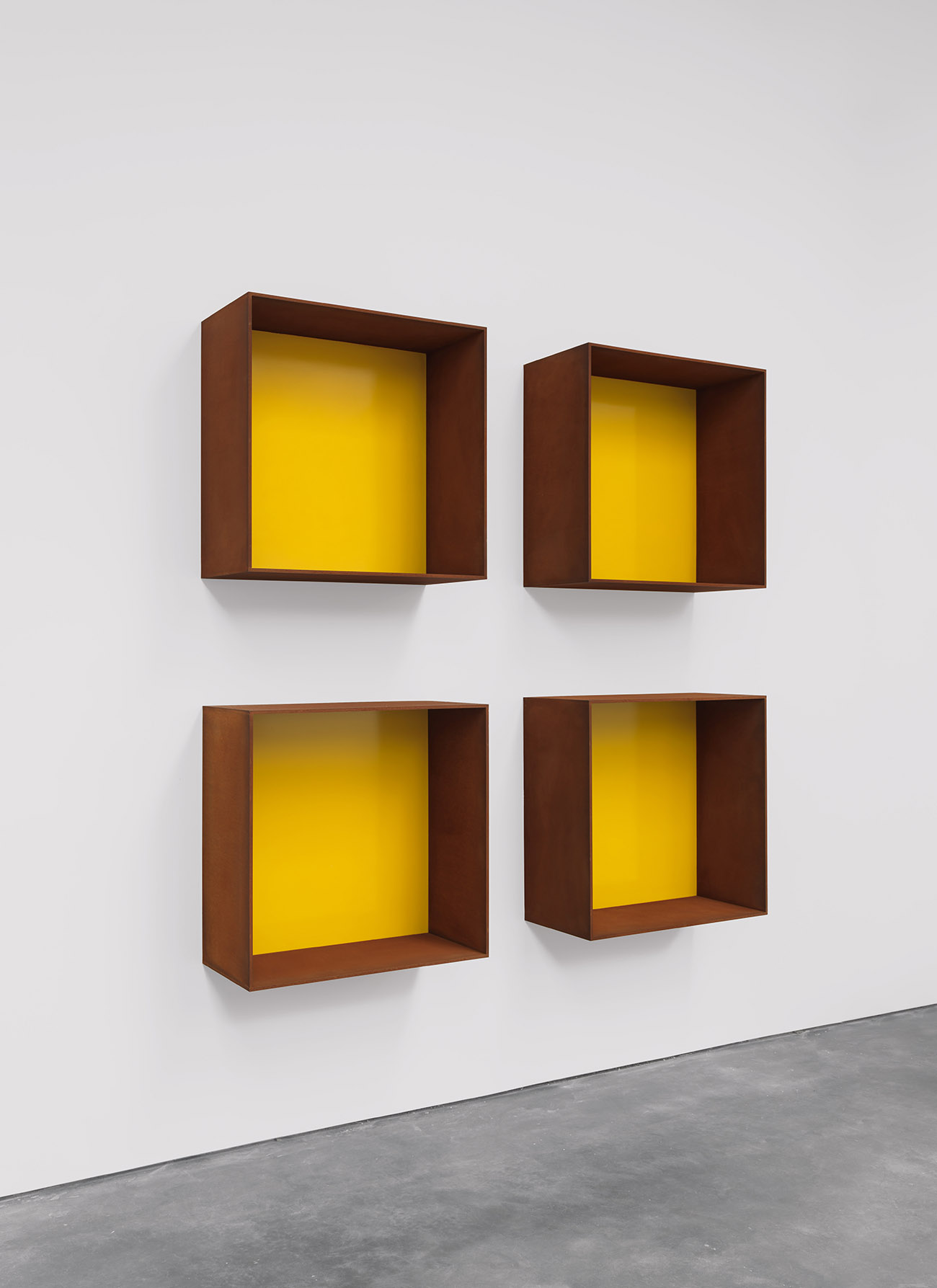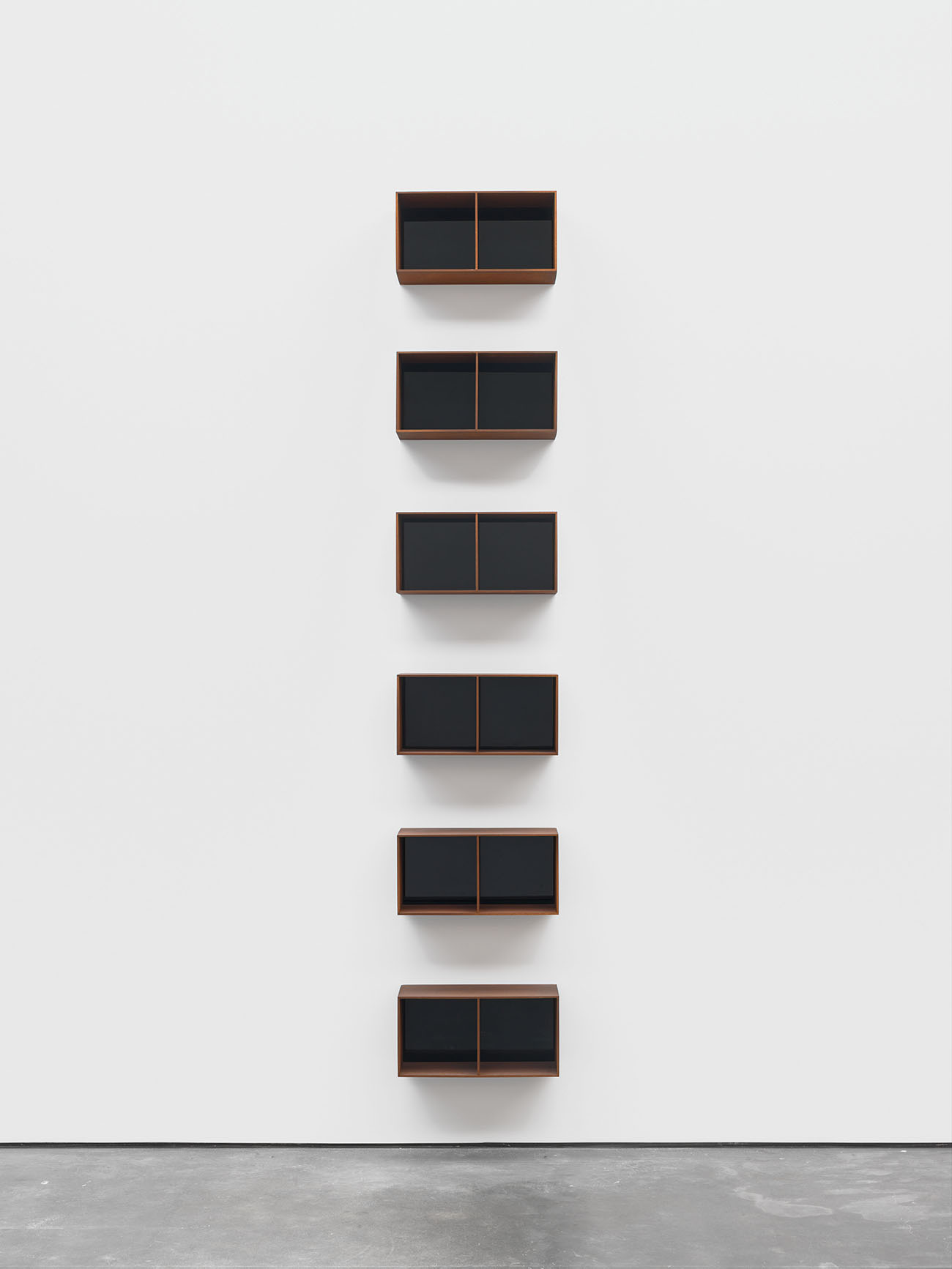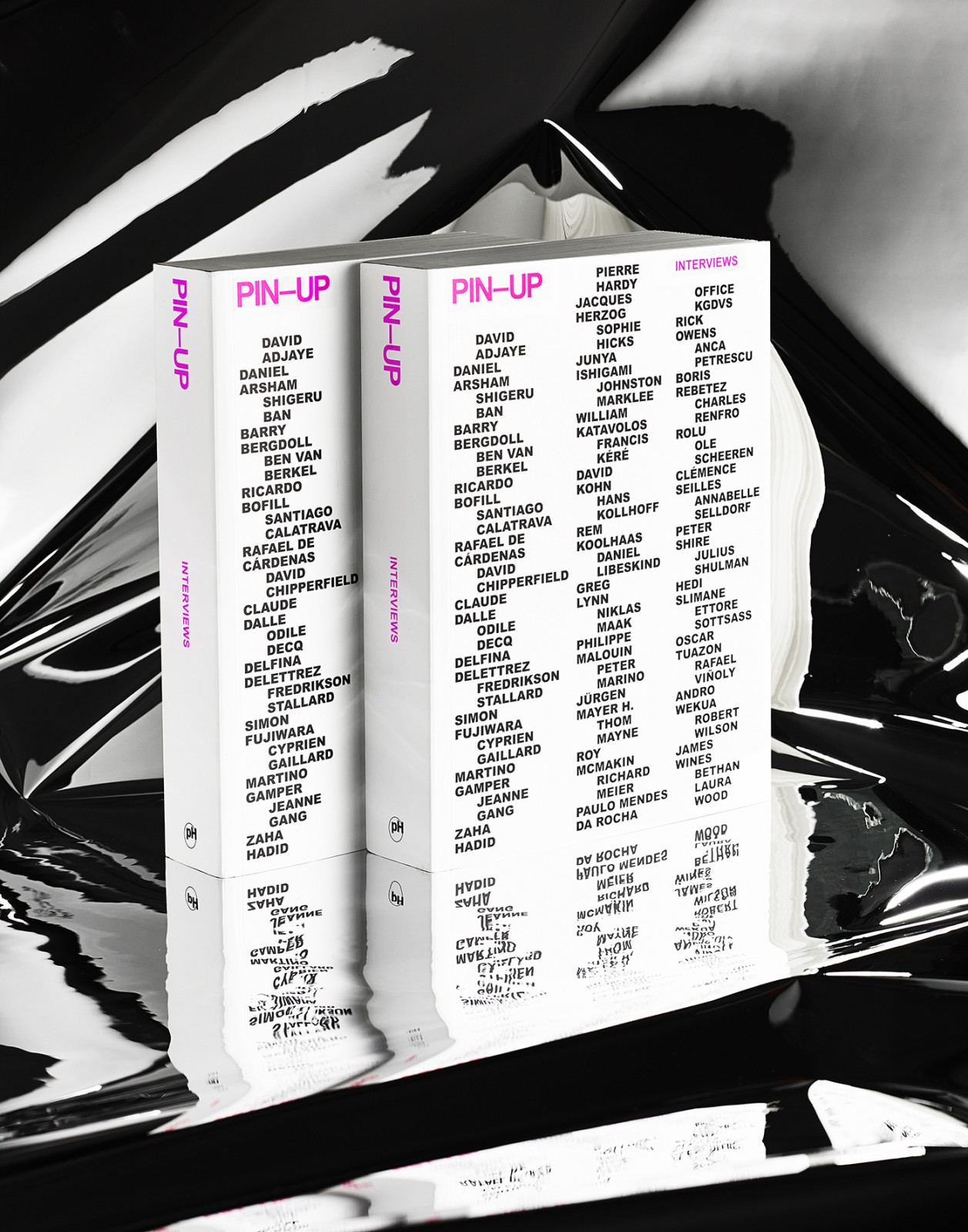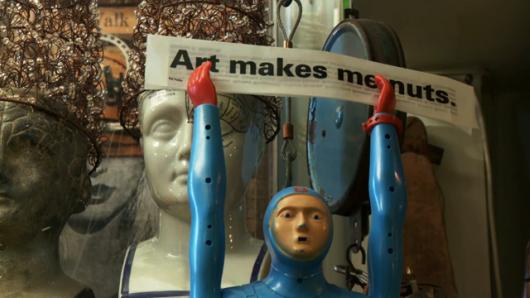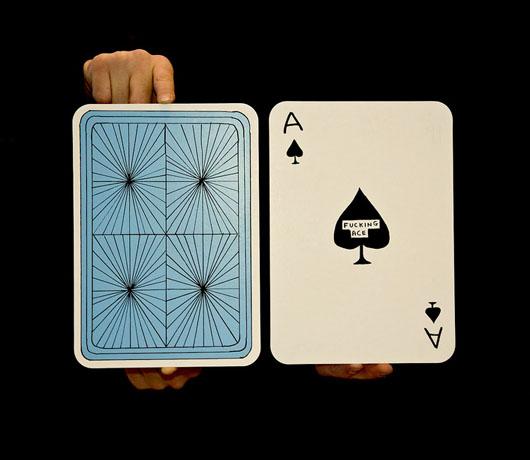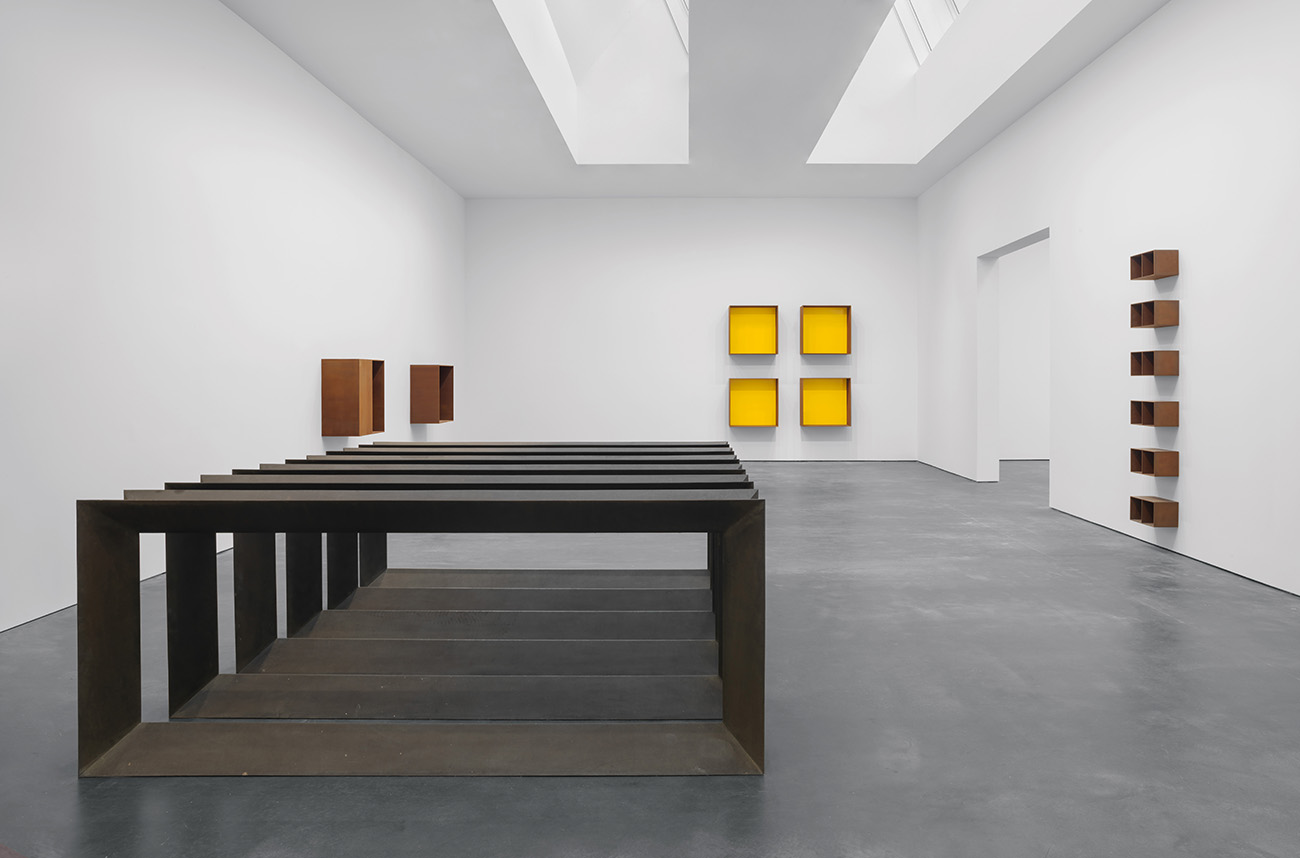
08.22.16
Excerpt: Book
Two Lost Donald Judd Interviews, Part I: On Cor-Ten Steel and the Scourge of Handiwork
In the pantheon of interview questions we’ve been asked, “Which designer would you consider to be the patron saint of Sight Unseen?” was one of our favorites, and one we thought long and hard about. As our tastes and interests have shifted over the years, we could often point to different historical figures — Ettore Sottsass during our heavy Memphis phase; Bruno Munari during our Shape Shop days. But if there’s one designer who remains a constant inspiration to us, it’s Donald Judd — a minimalist at heart, he was unafraid to indulge his fascination with materials, color, form and space. And yet as with most dead celebrities, we know things about Judd only through his vast portfolio of work — not to mention his oft-revisited living space — but never from his own lips.
So, earlier this summer, when we happened to come across not one but two vibrant, late-’80s interviews with Judd himself in the same week, we decided it was fate telling us to designate today Donald Judd day here on the site, where we’d excerpt text from both. The first interview we’re posting today comes from Donald Judd Cor-Ten, the 72-page volume that accompanied a David Zwirner exhibition of the same name last winter. The interview we’re posting was conducted in 1990, at an inn on Lake Lucerne in Switzerland that Judd had begun renovating and using as a studio and living space five years before he died. Here he speaks with curator and art critic Claudia Jolles about his friendship with Richard Serra, his aversion to public commissions, and why we should never refer to his furniture as art.
You usually choose very remote spots for your work, in contrast to Richard Serra, who said that his sculptures work best in active urban centers; they need the public.
I am absolutely in disagreement with that attitude. I like Richard’s work a great deal. But as I said many times, I am not interested in the public. My work is not private, it is not public; it is just my work.
But still, it is always scaled to human size.
That is because I happen to be human size. I am not interested in any kind of a reaction, for or against the public. I will do exactly the same work in the middle of the city as down at the ranch where very few people would ever see it. I am interested in good spaces. I am not interested in fighting bad spaces. So I have done very few so-called public pieces, or commissioned works. If I do them, I would do them in good circumstances, not in bad circumstances.
So if the public opposed your work — as, for example, in the case of Tilted Arc — would you withdraw it?
There was an agreement for Tilted Arc to be permanent. I defend him thoroughly. This is also my problem with Heiner Friedrich and Giuseppe Panza and so forth. In that case, I am absolutely on Richard’s side. I wouldn’t have put it there in the first place. But given his thinking, and the fact that it is there, it should stay there.
But if, for example, a factory commissioned a piece from you and the workers didn’t like it, what would you do?
If this happened before the work was installed there and within the factory, I would forget about it, I wouldn’t insist on it.
Does the fact that Marfa is so far away mean that this kind of a total vision, of a Gesamtkunstwerk can’t be realized in the midst of a social environment?
That is the actual fact. The work is in Texas because I live there, this is an accident. It is not a choice to be remote, but the fact is that you can’t do anything very large and serious in the middle of society. Not in America, not in Europe, not anywhere. And I am against fighting. I don’t think the work should develop in a hostile situation.
Your work is often built upon a system of variation. But it is never very obvious whether this system follows as a precise rule. Do the existing possibilities stand for all the other unrealized ones?
I just do the possibilities which are the most interesting. I don’t want to realize a comprehensive sequence of all the possible solutions. Because usually just some of them are good. Usually I can think of many more possibilities than I can afford to build.
Do you ever change the works after they come from the fabricator?
No, you can’t. Once they are made, they are made.
Do your metal pieces come all finished from the factory, or do you get them in parts and put them together yourself?
The parts have specific determination. The whole piece is made by the factory from the beginning to the end. It is not that I juggle with colors afterward. They are joined more carefully than that.
And how was it with the earlier pieces of lacquered metal?
The older ones I painted, but it is not good for you. I hated to do it. If I can give it to somebody else to do it . . . also in the factory they are set up so that they don’t have to breathe in the vapors.
Do you work with assistants?
The factories are the assistants. There are quite a few different enterprises and people doing the work. We have a small factory now in West Texas. Peter Ballantine in New York makes the plywood pieces. Menziken is the factory here in Switzerland that does the anodized plate aluminum. They made all the pieces for Baden-Baden.
So the works in Baden-Baden were not site-specific?
No. I knew the space ahead of time, so I chose the works in relation to the museum space. There is a range of pieces which are very particular and can never be moved, and pieces more general which are going to look well in any room that is big enough and isn’t specifically bad architecture.
If you make pieces of this size, do you first make a model to try them out?
No, usually not. Models usually don’t do me much good.
I thought it must be fun?
No, I hate models, and they don’t provide any information.
In a text about Kazimir Malevich, you wrote that time and space are made by events and positions. How do your objects define time and space? Does it have something to do with perception, as with Serra’s works, which you have to walk around, or does the seriality refer to a certain rhythmical flow of time?
Not intentionally. I don’t differ with Richard on what you just said. I think that pretty much this work defines the space, as architecture does, too. And if you don’t have a clearly thought-out space, in some way it is less space.
Your wall pieces seem to deal with space in a very American way. It is not a space that rises from the ground but airspace that can be measured and sold to a skyscraper building company.
Well, that hasn’t anything to do with it. That is really more recent than these pieces of mine. It is only during the last ten years that this has become a big racket. Skyscrapers are just silly.
Walter Gropius once said that art, architecture, furniture, and crafts can be placed in a hierarchical order.
That is a big subject. There is a little bit of truth to what he says. Except that I don’t like the hierarchy between all these things. I think the hierarchy is possibly more in their definition, in their individuality. The art is this strange thing that one person is interested in. It is found to be in some way more particular because it is useless. The qualities of architecture tend to be more general and therefore can’t be that peculiar. This is where to place it, it is not a criticism or to make a hierarchy. Generally people don’t appreciate the importance of crafts. Pots can have a lot of particularity or they can be more general, like dishes. That is kind of open.
What do you think about this discussion of whether furniture and art have the same intensity?
Furniture is furniture, it is not art. It is made to sit in, it is not made just to look at. I object to that whole category of art furniture.
So your furniture can be manipulated by the user? For example, could he put a cushion on it?
Sure, it is real furniture. I know other people who think it is uncomfortable, but I think it is just fine.
Robert Mangold once said that the perception of a piece of art must be very quick, at one glance. You build houses so that one can live with your pieces. Do you want them to have a kind of meditative quality?
I don’t agree with the speed of visual perception. I think that ordinarily art takes time. And if something is worth looking at, you want to look at it again and again. I think basically art is meditative.
In the East, reality is poor and shabby. Personal fantasies and dreams seem much more reliable than the visible world. A pragmatic attitude, as in minimal art, seems unthinkable in the East.
Everything is poor and shabby in New York and West Texas too.
But the perfection that you require in your work couldn’t be done in Moscow.
It is very difficult to achieve in New York too. In fact, this is about the best New York can do. The level of factories is pretty low. I am almost sure that there is no factory east of the Mississippi that can do as good a job as Menziken. That is one reason why I am doing it there. So much for the perfection of the United States. I don’t consider the pieces perfect. I just don’t think of them in that way. They should be well made, because if they are badly made, it is obtrusive, that’s all. Being well made is just eliminating troubles and things to be distracted by. So perfection is not exactly what my idea is.
But there are no mistakes.
There are a lot of mistakes, but we are trying to get rid of them. Actually the works are not handmade by me, but they are surprisingly handmade by the factory. One of the big problems is to keep the handwork out of it, or to keep it down. I don’t like the quality of handwork. I don’t want the pieces to look as if someone worked on the edge.
Why not?
Because it goes against what I am after in terms of the art. There is a whole philosophy. I am not interested in the surface of this wooden table, for example, I don’t want to imitate the edge, fooling around to get it to look worn. It is just fine the way it is – just leave it alone. I don’t want the work to look as if some sculptor had handled it, was carving the edges. I don’t like that kind of art, because back there is a big philosophy, a big tradition, with which I don’t agree. So I don’t want it to show through even halfway. It is a whole important position that I don’t agree with. I don’t want a little bit of Michelangelo sticking along the edge somewhere. He is just fine, leave him alone too. Some people are interested in what the world looks like and have done pretty good things. Claes Oldenburg is a pretty radical artist. But I think either the world is natural and it is fine and you just leave it alone, or if it is man-made – as things go now – it is bad and you better leave it alone. I don’t see any reason to play around with it. I would rather do something new, as a complete alternative, as far as the man-made side is concerned.
Are there artistic ideas that you didn’t realize because they were done before?
Not really. I wouldn’t worry about it if someone did do it. For example, I held off using Cor-ten for a while because Richard Serra started using it. I don’t know when I thought about it in relation to when he started – it doesn’t matter. The surface seemed rather soft to me. So I didn’t use it, and anyway it was beyond my money at the time. Then he started working with it and I thought, well, that kind of takes care of that, I shouldn’t use it. But after a while I thought, that is ridiculous. If I use it, I use it. I started to make pieces. The surface turned out not to be so soft. Barnett Newman used it too, he probably was the first one.
For Broken Obelisk?
Yes, or the Zim Zum. Mostly it turns out not to be much of an issue. I remember earlier times when I was a little bothered when people started doing things on the land, because I had this in mind. But then it turned out they were not doing great things, so it didn’t matter. Except for the destruction of the land.
All images: Installation view, Donald Judd, David Zwirner, New York, 2015. Art © Judd Foundation. Licensed by VAGA, New York, NY. Text excerpted from Donald Judd: Cor-ten. Published by David Zwirner Books, 2016.
